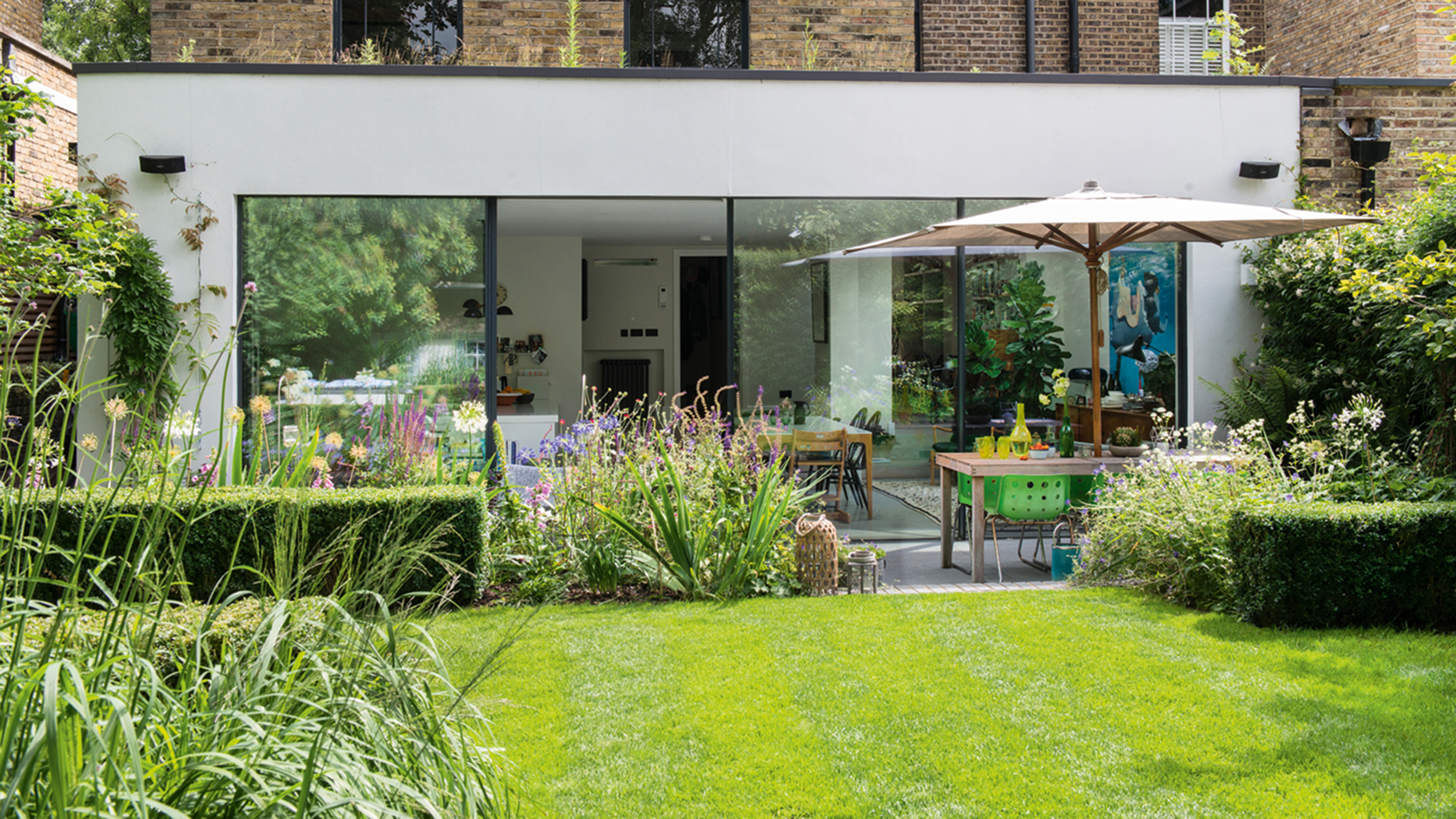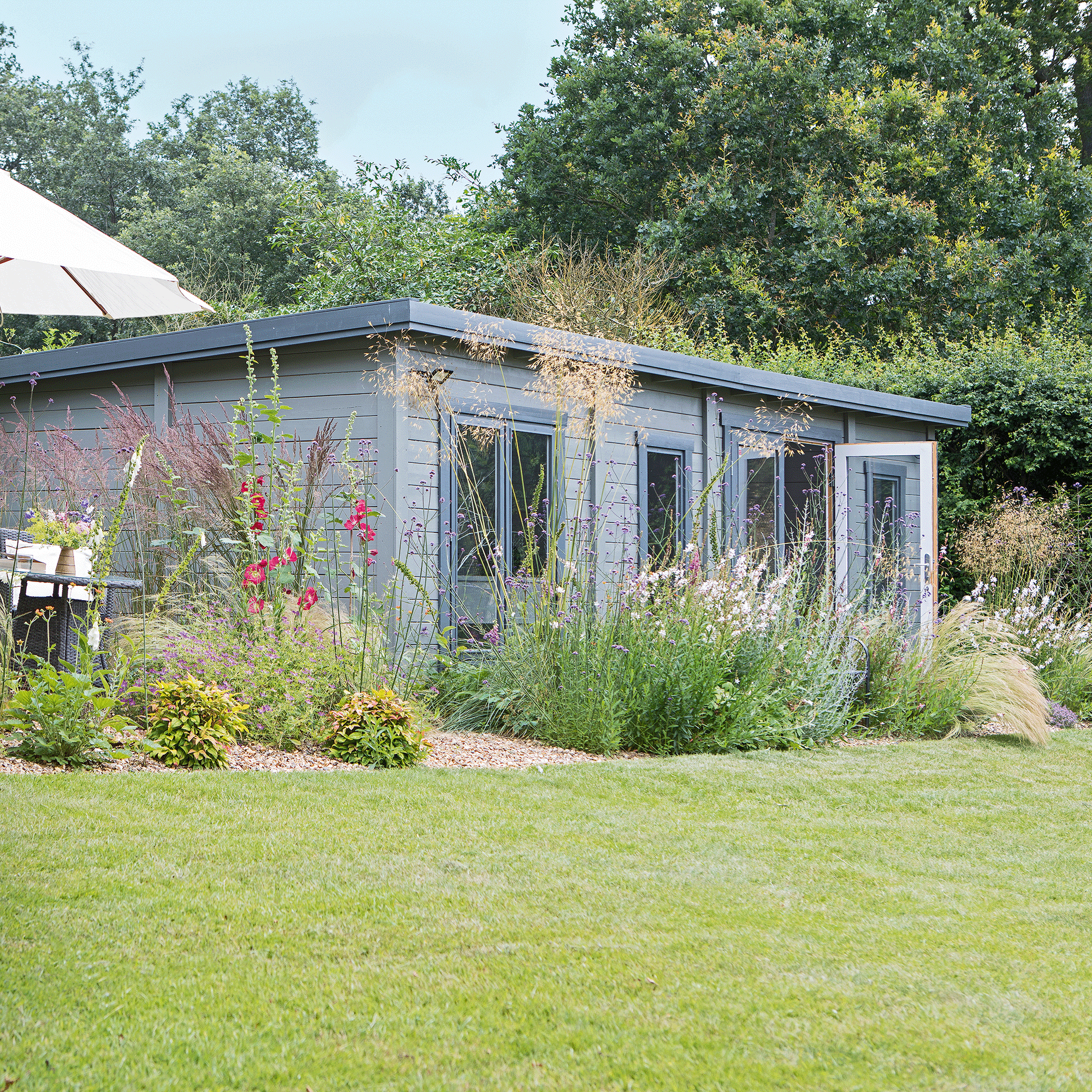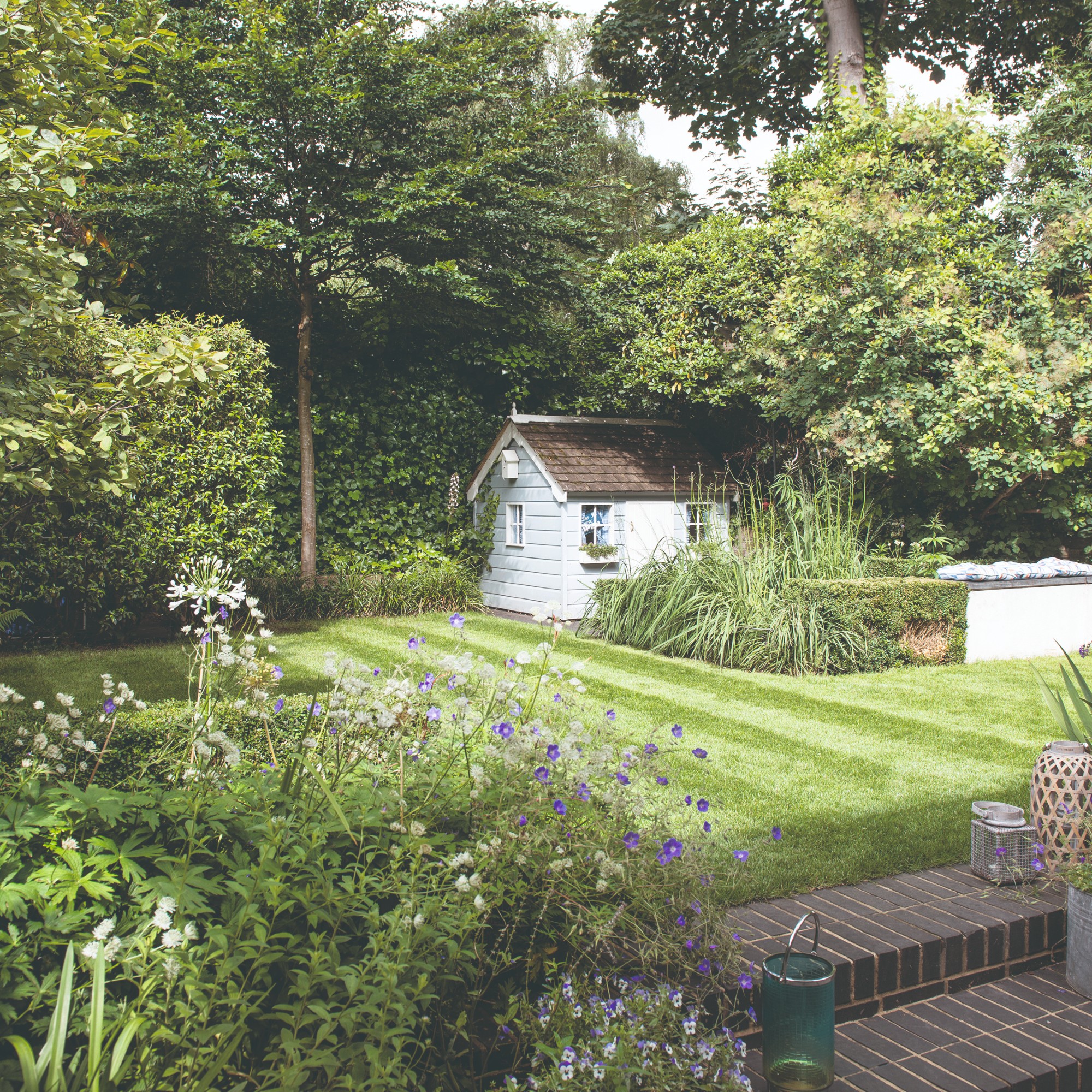Should you cut wet grass? Experts weigh in on the perfect conditions to mow your lawn
The rain doesn’t show any signs of letting up, but is now the right time to be cutting the grass?


You may think that the British weather is unreliable, but you could argue that it’s actually very reliable. After all, we never have to wait too long before it starts raining again - and as soon as the rain stops, everyone starts asking themselves the same question: Should you cut wet grass?
Now that spring is on the horizon and grass is actively growing again, green-fingered gardeners are itching to tackle their overgrown and messy lawns. Unfortunately, the weather just hasn’t been on our side so far.
And as the rain continues to pour, the grass gets progressively longer, and the call of the lawnmower is just too hard to ignore. However, don't start the engine until you've read our expert advice to avoid making a lawn care mistake.
So, if you’re raring to whip out one of the best lawnmowers and give your grass a good ol’ haircut, you'll want to find out whether you really should cut wet grass. And the answer isn’t as black and white as you’d think...

Should you cut wet grass?
While looking out of the window and seeing an overgrown jungle of grass can make any houseproud gardener shiver, don't rush into cutting wet grass.
'As we endure a lot of unpredictable, rainy weather in the UK, mowing the lawn can pose many challenges for most lawnmowers, so we recommend that you avoid using a lawnmower in the wet weather where feasible,' says Darren Feasey, brand and product director at landcare experts Flymo.
But why? And what would happen if you did cut wet grass?
Sign up to our newsletter for style inspiration, real homes, project and garden advice and shopping know-how
The dangers of cutting wet grass
In the back of your mind, you may distinctly remember someone telling you that you should never cut wet grass. You might not remember who told you that or why someone told you that… but there’s a reason why they warned you.
Although nobody can stop you from cutting wet grass, you might want to first consider the dangers of cutting wet grass.

1. It’s unsafe
Water makes everything slippery, and grass can be especially slippery when it's wet. This increases your chances of falling over and injuring yourself, as lawnmowers are also harder to control in slippery conditions.
If you’re already unstable on your feet, it’s best to avoid such a risk. And that’s before we mention the electric shock risk with corded lawnmowers or grass trimmers.
2. The cuttings will clump together
'If you've experienced heavy rain, we would recommend avoiding cutting the lawn as very wet grass is more likely to clump and stick to the lawn mower deck,' warns Ryan Patterson from garden tool company Husqvarna UK.
This is inevitable when you cut wet grass, as the moisture makes the cuttings stick to everything, even the blades themselves. This can ultimately put a strain on your lawnmower and cause it to overheat.

3. You could get yellow patches
The clumping together of grass cuttings won’t just affect the lawnmower, either.
‘They can also spread onto the healthy and new grass that’s growing and almost smother it - preventing sunshine and nutrients from being absorbed,’ says Lee Smith, gardening expert at Composite Warehouse. ‘This will result in patchy and yellow areas in your grass.’
4. You might ruin your lawn
It’s important to cut your grass when the ground underneath is hard. When the grass is saturated and wet, the wheels of your lawnmower can dig into the soil, pulling it up and sometimes leaving giant craters in its wake.
If that happens, you’ll have to learn how to level a lawn to flatten it out again - and that’s not something you’ll want to do if you can avoid it.
As if that wasn't enough, 'You run the risk of spreading fungal diseases and making muddy patches when you’re cutting wet grass,' says gardening expert Calum Maddock at HomeHow.co.uk.

5. You won’t get an even cut
Whether you want stripes in your lawn or you just want an even cut, cutting wet grass won’t give you that.
Even the best lawnmowers on the market can’t perfectly slice through wet grass that wants to stick to the blades, so your grass will likely look patchy and uneven afterwards.
6. You could damage your lawnmower
Lawnmowers aren’t the cheapest garden gadgets in the world, especially when you know how much you should spend to get a top-quality option, so you probably want to protect these investments at all costs.
Because of this, it’s important to realise that cutting wet grass can damage your lawnmower - especially if it’s not one designed to cut both wet and dry grass.
Sometimes, even the best lawnmower can suffer under the weight and wetness of clumpy grass cuttings. And before too long, you may find that your expensive lawnmower has become completely blocked and is starting to overheat.
How to cut wet grass safely
Of course, we understand that sometimes you have no choice when it comes to cutting the grass. Whether you’re selling your house and need your garden to look perfect for viewings, or you just can’t stand your unruly grass any longer, you won’t get locked up for choosing to cut wet grass.
'As far as we’re concerned, if it’s growing, don’t stop mowing,' advises David Mitchell, buyer for garden and seasonal at Homebase. However, it’s important to take precautions and understand how to cut wet grass safely.
First, it’s a good idea to remove as much surface water as possible. To do this, drag a hosepipe horizontally across the grass, as this will act as a makeshift squeegee. Then, 'Try to cut higher than normal at around two inches, and make sure your blade is as sharp as possible for the cleanest cut,' says David.
If you can do this in smaller, shorter sections. By stopping every so often, emptying the basket, and wiping the blades clean, you should be able to stop the grass from clumping together and your mower from overheating.

You might also want to reassess the mower you're using. 'If you’re thinking of cutting wet grass on a more regular basis, using a lighter mower will lessen the impact on your lawn,' explains gardening pro Calum.
'There are also mowers built for wet as well as dry cutting, so it’s worth doing a bit of research to ensure you’re using the right machine.' The Gardena Handymower could be a good option for this.
It’s almost important to remember that if you do cut wet grass, you should then rake it afterwards to remove any loose cuttings. If these cuttings sit on the grass for too long, they can actually kill the grass underneath.
But while it's easy to focus on the downsides of cutting wet grass, there are some positives, too. 'There are some great ways to make the most of having a wet lawn too, such as seeding the bald patches ready for spring,' notes Mitchell from Homebase. 'Also, if you apply moss control on a drizzly or wet day, it will soak into your lawn even faster.'
How to cut grass correctly

Come rain or shine, it’s important to cut your grass correctly. And while it may seem like an easy job to complete, so many people are doing it wrong. ‘When it comes to lawn care, make sure you don’t cut the grass too short,’ explains Joe Handley, outdoor product marketing manager at Black + Decker.
‘People often make this mistake with the aim to reduce gardening time in the future, but in the long run, the lawn will pay a heavy price for an extra hour of free time.’
Yes, cutting your grass too short - especially during the wetter season - can have disastrous effects on the health of your lawn.
‘Shorter grass can look more uniform, but when the blades are cut too short, it can leave plants malnourished and open to diseases. Longer blades of grass help shade the soil underneath, which means it takes a lot longer for moisture to evaporate. You should aim to cut the grass regularly and, as a general rule, try to keep blade length above 2.5cm to promote healthy growth.’
The best time of day to cut grass
Mowing your grass correctly and at the right time is the best way to make your grass look greener. But when is that prime time? According to experts, the best time of day to cut the grass is either mid-morning or late afternoon.
Cutting the grass when it’s too wet OR too dry puts a huge amount of stress on your grass. But if you wait for the morning dew to burn off or for the midday sun to dim, you can avoid this unnecessary stress. However, when it comes to the last time to cut grass before winter, we understand you might not have the luxury of choice if you're dodging bad weather, so just tackle it when you can.

FAQs
How long should I wait to mow the grass after it rains?
Ideally, you should wait until your grass is dry before you get the lawnmower out. If it were a light shower, you should be able to start mowing after about two hours.
However, it’s hard to gauge a timescale when there’s been a heavier downpour, as you could have to wait anything from five hours to two days.
The best way to determine whether it’s dry enough to cut the grass is to go outside in open-toe shoes. If you can walk through the grass without your feet getting wet, you should be good to go.
Can I cut grass when damp?
You should try and wait to cut your grass until the grass is dry, but you can cut grass when it's damp, as long as it's not too wet. The best way to test this is to walk across your grass in open-toe shoes.
If you're able to walk across without getting your feet wet (i.e. only your shoes get wet), it's possible to mow your grass without it being too risky. However, if your feet do get wet, it's best to wait to avoid the risks associated with cutting wet grass.
When should you not cut grass?
You shouldn’t cut grass straight after a heavy rainfall or when the ground is soaking wet. But on the flip side, you also shouldn’t cut the grass when the ground is too dry.
Because of this, it’s best not to cut grass during the winter months, a heatwave or drought, as this will create unnecessary stress for your lawn.
Can I use a strimmer on wet grass?
If you really wanted to, you could use a strimmer on wet grass. However, it’s unlikely that you’ve achieved your desired results, and you may damage your lawn in the process.
Because of this, most experts would suggest waiting for your grass to dry out for a few days before using a strimmer.
So, you should try and avoid cutting wet grass if you can... but the option is still there if you need it.

Lauren Bradbury has been the Content Editor for the House Manual section since January 2025 but worked with the team as a freelancer for a year and a half before that. She graduated with a Bachelor’s degree in English and Creative Writing from the University of Chichester in 2016. Then, she dipped her toe into the world of content writing, primarily focusing on home content. After years of agency work, she decided to take the plunge and become a full-time freelancer for online publications, including Real Homes and Ideal Home, before taking on this permanent role. Now, she spends her days searching for the best decluttering and cleaning hacks and creating handy how-to guides for homeowners and renters alike, as well as testing vacuums as part of her role as the Ideal Home Certified Expert in Training on Vacuums, having spent over 110 hours testing different vacuum models to date!